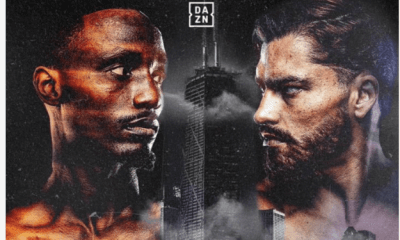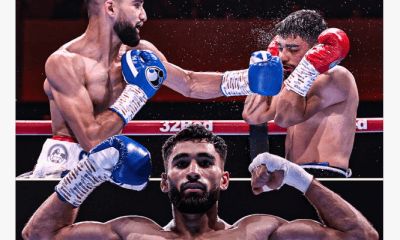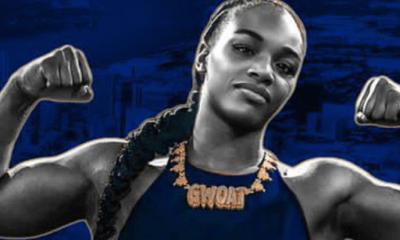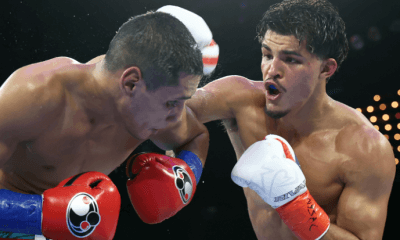Featured Articles
Naoya Inoue is the 2023 TSS Fighter of the Year
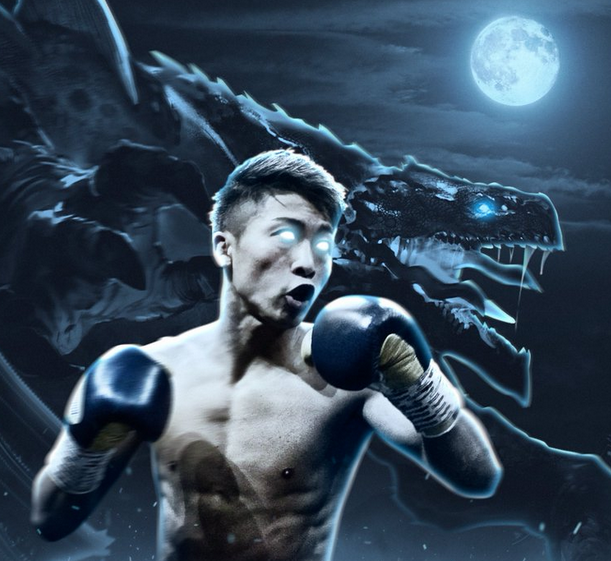
Naoya Inoue is the 2023 TSS Fighter of the Year
Japan might be the Land of the Rising Sun, but it also is notable for its dizzying array of fearsome fictional creatures, the most famous of which, Godzilla, made the first of its 38 movie appearances (33 produced in Japan, five in the United States) in 1954. Originally scaled to be 164 feet tall in relation to film-set replicas of Tokyo skyscrapers, the prehistoric reptilian sea monster could level entire cities with its enormous size and strength as well as a signature weapon, an “atomic heat beam” blasted through the mouth as if from a gigantic flamethrower.
At 5’5½” and a mere 121.8 pounds for his most recent rampage in a boxing ring, Naoya “The Monster” Inoue might not appear to be as physically imposing as Godzilla, but he must seem plenty big enough to the outclassed guys in the other corner who can be excused for feeling as if they were contending with a larger-then-life force of nature with a repertoire of power punches no less destructive than atomic heat beams loaded into each gloved fist.
In almost every reasonably reputable pound-for-pound listing of the planet’s best boxers, the top two spots are reserved for Inoue (26-0, 23 KOs), the now-undisputed super bantamweight champion, and Terence “Bud” Crawford (40-0, 31 KOs), the undisputed welterweight ruler. One boxing writer, placing Crawford first and Inoue second, describes the difference between them as the width of a single strand of horse hair used in the padding of gloves in a bygone era.
For the purpose of not having both of the sport’s premier performers share the honor, TSS has, with more than a bit of trepidation, selected the 30-year-old Inoue as its 2023 Fighter of the Year. But instead of slotting Crawford, 35, at No. 2, let us split the difference and call it, well, a case of the Japanese miniature monster coming in at No. 1 to Crawford’s 1A. But 2024 is another year, and it will be fascinating to see which of the two unbeaten (and, for now, seemingly unbeatable) superstars, if not some other elite practitioner of the pugilistic arts, crosses that future finish line a nose ahead.
Was there a criterion employed by TSS to marginally separate the obvious and indisputable greatness of Inoue and Crawford? Well, yes. The economics of boxing at the elite level are such that the biggest of big fights virtually guarantee eight-figure bonanzas for blue-chip main-eventers, which have led to some punching for pay a single time in a given year. Hey, no future Hall of Famer is going to log an insane 43 bouts in a six-year period, as the late, great Archie Moore did after wresting the light heavyweight championship from Joey Maxim on Jan. 27, 1954, but Omaha, Neb., native Crawford fought just once in 2023, and even if it was a career-best, Hall of Fame-level ninth-round stoppage of fellow unbeaten unified titlist Errol Spence Jr. on July 29, a victory which reportedly earned him a $25 million payday, it still comes down to a one-and-done. Now the holder of all four major alphabet belts (WBC, WBA, IBF and WBO) at 147 pounds as he was at 140, Bud could afford to take the rest of the year off if he so desired, and he did.
Inoue wasn’t crazy-busy in the year about to pass into history, but he moved up from bantamweight to super bantamweight with almost ridiculous ease, and against a pair of opponents who should have been tough nuts to crack, but weren’t. Then again, asserting his dominance against high-quality rivals has become an Inoue trademark; nine of his last 11 victims were either reigning, former or future world champions. He debuted at 122 pounds by scoring an eighth-round TKO of highly regarded WBC and WBO titlist Stephen Fulton of Philadelphia on July 25, and followed that up on Dec. 26 with a 10th-round knockout of Marlon “The Nightmare” Tapales, a rugged, 31-year-old southpaw from the Philippines who came in with possession of the IBF and WBA belts, a 37-3 record and more faith in himself than logic dictated.
“I will be the Japanese Monster’s biggest nightmare,” Tapales predicted. “I’m 2,000 percent confident.”
It didn’t take all that long for Inoue to strip Tapales of about 1,900 percent of that confidence, flooring him with a left hook in the fourth round and proceeding from there to move closer to the almost-inevitable conclusion, which came after an elapsed time of 1 minute, 2 seconds into round 10.
“I couldn’t keep up with Inoue. His speed surprised me,” Tapales said after referee Celestino Ruiz counted him out.
Tapales shouldn’t have been very surprised by anything Inoue pulled out of his well-stuffed trick bag. Boxing writer Cliff Rold, in the lead-up to the bout, described him as “one of the game’s most complete combinations of power, speed and skill since Roy Jones Jr.,” and commentators Joe Tessitore and Mark Kriegel, in Tokyo for the ESPN+ telecast from the Ariake Arena, were similarly gushing in their praise, with Tessitore saying Inoue is “the one fighter you must watch” and Kriegel that “he’s a fighter that all fighters should aspire to be.”
The International Boxing Hall of Fame would seem to be a reserved destination for “The Monster” at some point, and it might be argued that he already has matched or possibly surpassed the career accomplishments of Japan’s most revered boxer, Masahiyo “Fighting” Harada, a former flyweight and bantamweight world champion who compiled a 55-7 record with 22 KOs from 1960 to 1970, including victories over such fellow legends as Thailand’s Pone Kingpetch and Brazil’s Eder Jofre.
“I think super bantamweight is my division now, so in 2024 I will look to show even greater form,” Inoue said after he’d taken care of Tapales. If so, like the announcement of a new Godzilla movie coming out, that is some prediction of future attractions.
—
Bernard Fernandez, named to the International Boxing Hall of Fame in the Observer category with the Class of 2020, was the recipient of numerous awards for writing excellence during his 28-year career as a sports writer for the Philadelphia Daily News. “Championship Rounds, Round 4,” the fourth installment of Fernandez’s four-volume anthology, is now out and available via Amazon and other book-selling outlets.
To comment on this story in the Fight Forum CLICK HERE
-

 Featured Articles3 weeks ago
Featured Articles3 weeks agoResults and Recaps from New York Where Taylor Edged Serrano Once Again
-

 Featured Articles5 days ago
Featured Articles5 days agoThe Hauser Report: Zayas-Garcia, Pacquiao, Usyk, and the NYSAC
-

 Featured Articles3 weeks ago
Featured Articles3 weeks agoResults and Recaps from NYC where Hamzah Sheeraz was Spectacular
-

 Featured Articles4 weeks ago
Featured Articles4 weeks agoFrom a Sympathetic Figure to a Pariah: The Travails of Julio Cesar Chavez Jr
-
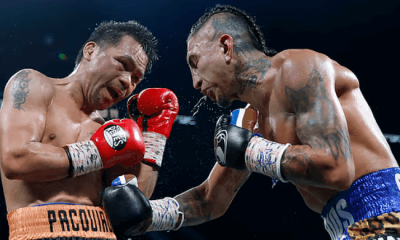
 Featured Articles2 weeks ago
Featured Articles2 weeks agoManny Pacquiao and Mario Barrios Fight to a Draw; Fundora stops Tim Tszyu
-

 Featured Articles3 weeks ago
Featured Articles3 weeks agoPhiladelphia Welterweight Gil Turner, a Phenom, Now Rests in an Unmarked Grave
-
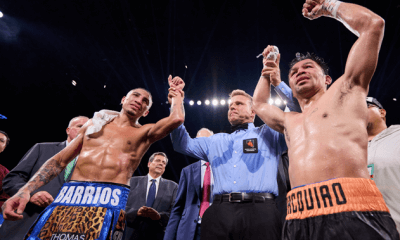
 Featured Articles2 weeks ago
Featured Articles2 weeks agoArne’s Almanac: Pacquiao-Barrios Redux
-

 Featured Articles4 weeks ago
Featured Articles4 weeks agoCatterall vs Eubank Ends Prematurely; Catterall Wins a Technical Decision


